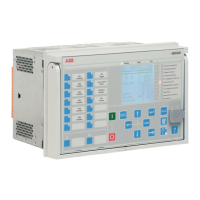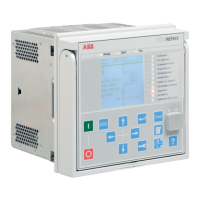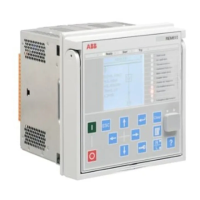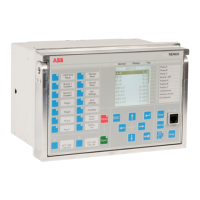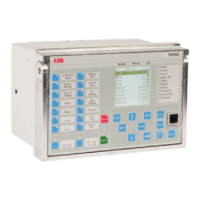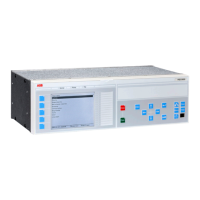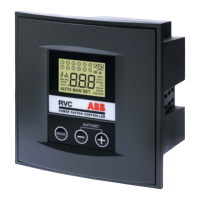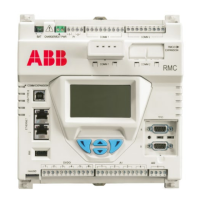signal to other systems or equipment in the substation. It can
also be used inside the same IED, to attach a RANGE aspect
to an analog value and to permit measurement supervision on
that value.
Measured value expander block RANGE_XP
The current and voltage measurements functions (CVMMXN,
CMMXU, VMMXU and VNMMXU), current and voltage
sequence measurement functions (CMSQI and VMSQI) and
IEC 61850 generic communication I/O functions (MVGGIO)
are provided with measurement supervision functionality. All
measured values can be supervised with four settable limits:
low-low limit, low limit, high limit and high-high limit. The
measure value expander block (RANGE_XP) has been
introduced to enable translating the integer output signal from
the measuring functions to 5 binary signals: below low-low
limit, below low limit, normal, above high-high limit or above
high limit. The output signals can be used as conditions in the
configurable logic or for alarming purpose.
Fault locator LMBRFLO
The accurate fault locator is an essential component to
minimize the outages after a persistent fault and/or to pin-
point a weak spot on the line.
The fault locator is an impedance measuring function giving
the distance to the fault in percent, km or miles. The main
advantage is the high accuracy achieved by compensating for
load current and for the mutual zero-sequence effect on
double circuit lines.
The compensation includes setting of the remote and local
sources and calculation of the distribution of fault currents
from each side. This distribution of fault current, together with
recorded load (pre-fault) currents, is used to exactly calculate
the fault position. The fault can be recalculated with new
source data at the actual fault to further increase the
accuracy.
Especially on heavily loaded long lines (where the fault locator
is most important) where the source voltage angles can be up
to 35-40 degrees apart the accuracy can be still maintained
with the advanced compensation included in fault locator.
13. Metering
Pulse counter logic PCGGIO
Pulse counter (PCGGIO) function counts externally generated
binary pulses, for instance pulses coming from an external
energy meter, for calculation of energy consumption values.
The pulses are captured by the binary input module and then
read by the function. A scaled service value is available over
the station bus. The special Binary input module with
enhanced pulse counting capabilities must be ordered to
achieve this functionality.
Function for energy calculation and demand handling
ETPMMTR
Outputs from the Measurements (CVMMXN) function can be
used to calculate energy consumption. Active as well as
reactive values are calculated in import and export direction.
Values can be read or generated as pulses. Maximum
demand power values are also calculated by the function.
14. Basic IED functions
Time synchronization
The time synchronization source selector is used to select a
common source of absolute time for the IED when it is a part
of a protection system. This makes it possible to compare
event and disturbance data between all IEDs in a station
automation system.
15. Human machine interface
Human machine interface
The local HMI is divided into zones with different functionality.
• Status indication LEDs.
• Alarm indication LEDs, which consist of 15 LEDs (6 red
and 9 yellow) with user printable label. All LEDs are
configurable from PCM600.
• Liquid crystal display (LCD).
• Keypad with push buttons for control and navigation
purposes, switch for selection between local and remote
control and reset.
• Isolated RJ45 communication port.
IEC05000056-LITEN V1 EN
Figure 1. Medium graphic HMI, 15 controllable objects
1MRK511232-BEN E
Pre-configured
Product version: 1.2
18 ABB
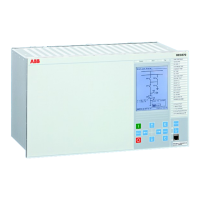
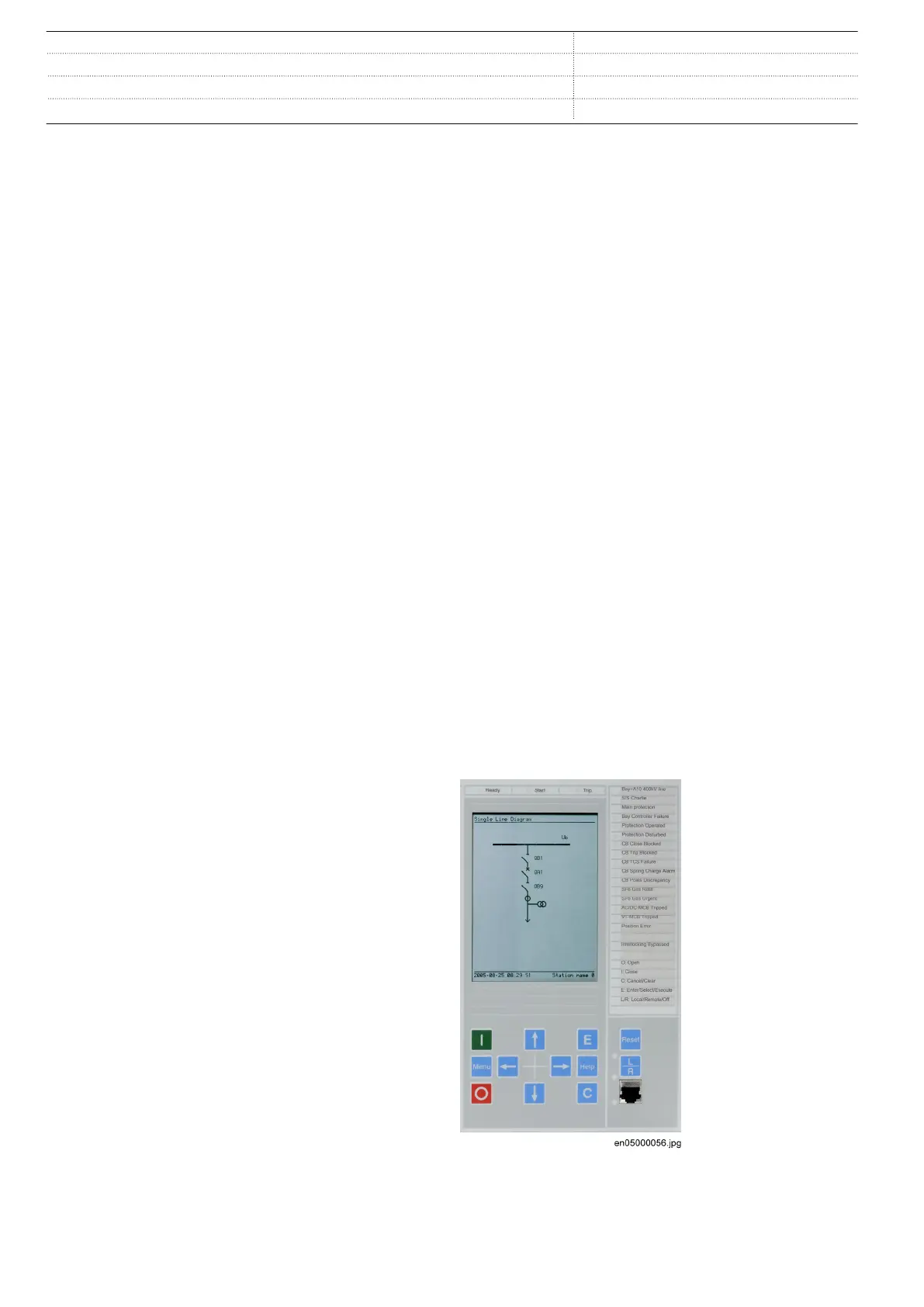